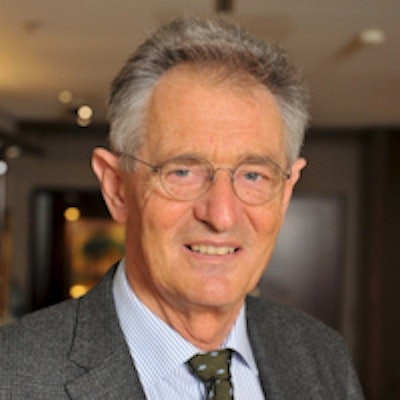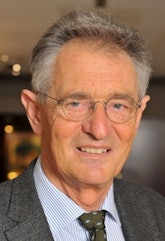
Changes to the training system are having major implications for the practice of radiology in Germany. Dr. Reinhard Loose, PhD, is head of the Radiological Protection Commission Working Group of the German Radiological Society (DRG), as well as professor of radiology and chief physician at Germany's Northern Institute of Radiology (at Klinikum Nürnberg), and has been involved in the process. In this interview, he discusses the certification requirements introduced in Germany during summer 2012.
The requirements for specialist certification have been revised? What's new?
In short, the last revision, dated 26 June 2012, reduced the overall certification period from 42 to 36 months, in line with radiotherapy and nuclear medicine. All radiologists must complete this in order to become specialist physicians. The certification simply shows that physicians and medical personnel have the required radiological protection skills, and 36 months is quite long enough.
 Dr. Reinhard Loose, PhD.
Dr. Reinhard Loose, PhD.What specific changes have been made?
The minimum requirements for Rö (x-ray) certification list the individual organ regions that must be covered: skeleton, thorax, abdomen, breast, and vascular system. Candidates now have to carry out 1,000 skeletal examinations rather than 1,200 -- what a relief! We reduced the number not because radiologists would be carrying out fewer skeletal diagnoses in the future, but because a larger proportion of complex fractures and other skeletal issues are now looked at using CT. The examinations normally have to be carried out within 12 months, but there are also reduced certification periods that make life a lot easier.
Another change is that we've now divided up the vascular certification process into peripheral, central, and cardiovascular systems, to create a clear separation between cardiology and radiology certification. We've also introduced so-called hybrid certificates in radiology and nuclear medicine, which include aspects of x-ray and CT diagnostics for individuals who've already obtained overall certification in nuclear medicine.
People in this group can learn about radiological diagnostic techniques in 24 months, excluding interventions and breast, so for example they can carry out PET/CT examinations on their own. And finally, we've introduced a specialist certificate in digital volume tomography, which includes conebeam CT and requires between 50 and 100 examinations and three to six months of experience.
What are the most important issues in terms of obtaining certification, particularly for prospective radiologists?
One important question is when they're allowed to work night shifts alone. In order to do so, they must be familiar with CT and the whole spectrum of conventional x-ray diagnostics. They won't carry out mammograms at night, MRI is not covered by the x-rays regulation, and angiography and interventions are often done at night by senior physicians or on-call services.
So the question now is how soon can they begin working nights? In the case of CT certification, it's 1,000 examinations and a minimum of 12 months, although this period is halved if they gain certification by working full time in a specialist radiology department with training accreditation. If they work in one of these departments, they can get CT certification in six months; patient numbers in these departments will usually be high enough to achieve this.
However, CT must be combined with the three specialist organ certifications: Rö 3.1 (skeleton), Rö 3.2 (thorax), and Rö 3.3 (abdomen). Assuming the reduced period doesn't apply, each of these normally takes 12 months to obtain. The reduced period applies if they've already obtained one of the certificates in a training -- or even in a nontraining -- department; as such, the subsequent ones take half the time, i.e. six months. In other words, it's 12 + 6 + 6 months, instead of 3 x 12.
There was also going to be a double reduction for radiologists at accredited training institutions, so they'd get their first certificate in six months and the second and third in three months. This would have been a huge help to those of us who work in hospitals, because it would have meant that assistants could begin night work sooner. However, this idea was rejected after heated debate between the federal environment ministry and the states' x-ray regulation committee, so three-month certification won't be possible.
When the period was reduced from 12 to six months, we also agreed that people could obtain these certificates at training institutions on an overlapping basis, so it will still be possible to get Rö 3.1 to Rö 3.3 plus Rö 5.1 within 12 months and then start working. This also makes things much easier.
Are there any further changes in the pipeline?
The x-ray regulation still requires teleradiologists to spend 36 months getting overall certification, which is a problem. It creates a situation that is difficult to understand: an assistant radiologist at my 1,400-bed hospital can work nights after 12 months, but they can't at the same time do teleradiology for a small 100-bed hospital. We need to change the x-ray regulation so that you need specialist certification for teleradiology instead of full certification as you do now. This would mean you'd need a one-year specialist certificate for the applications concerned.
Another objective as part of the implementation of EU-BSS, the new European Basic Safety Standards, is to combine the x-ray and radiological protection regulations into a single radiological protection regulation for medicine so that we no longer have a situation where nuclear medicine and radiotherapy are governed by the radiological protection regulation and radiology by the x-ray regulation. This completely new regulation should be implemented by 2018, thus eliminating any overlap between the existing two.
Editor's note: This is an edited version of a translation of an article published online in German by the DRG. Translation by Syntacta Translation & Interpreting.



















